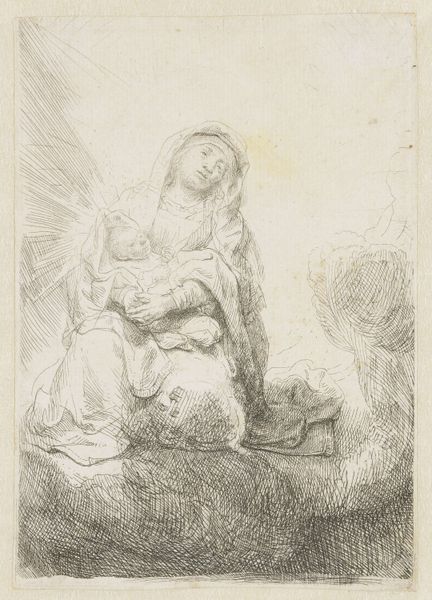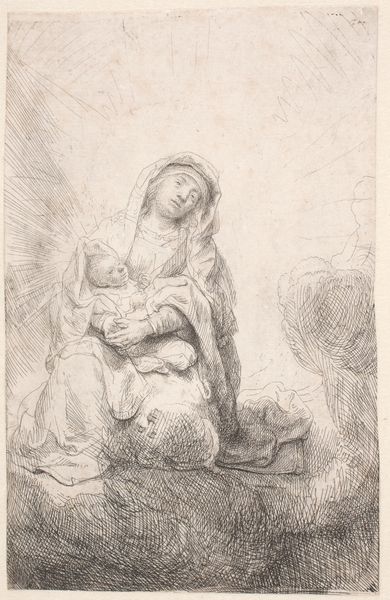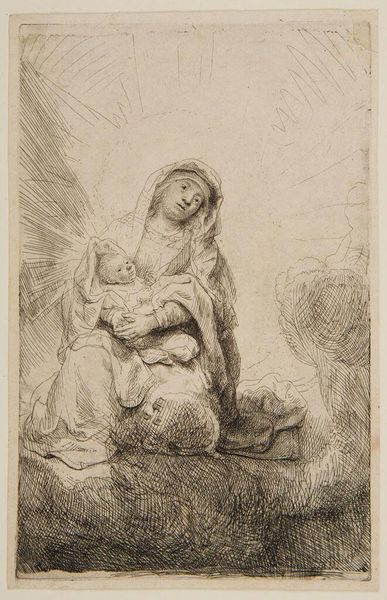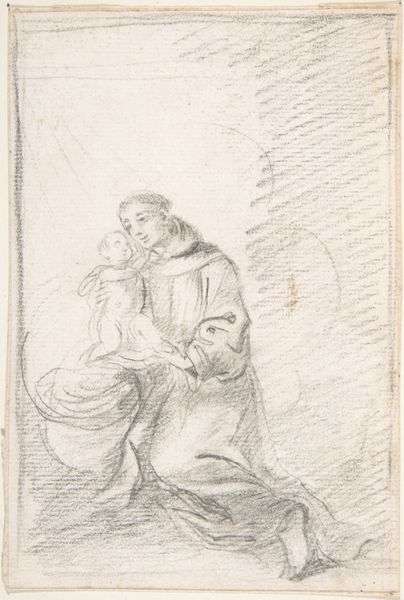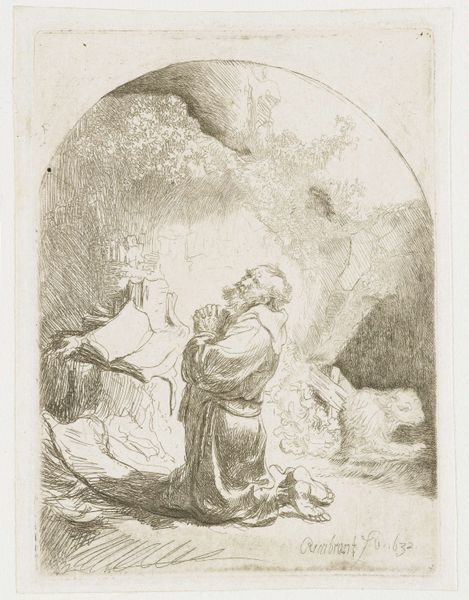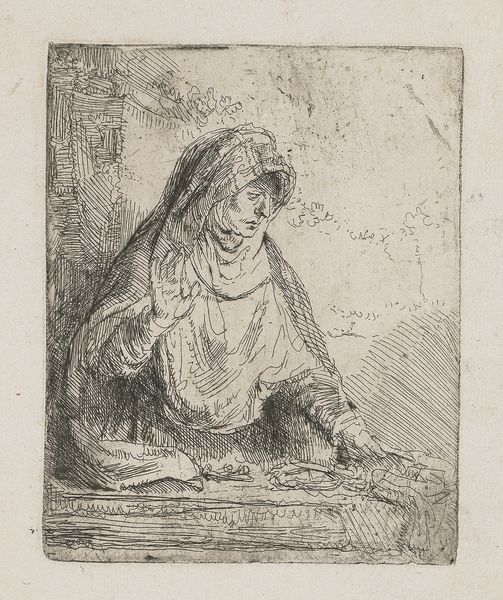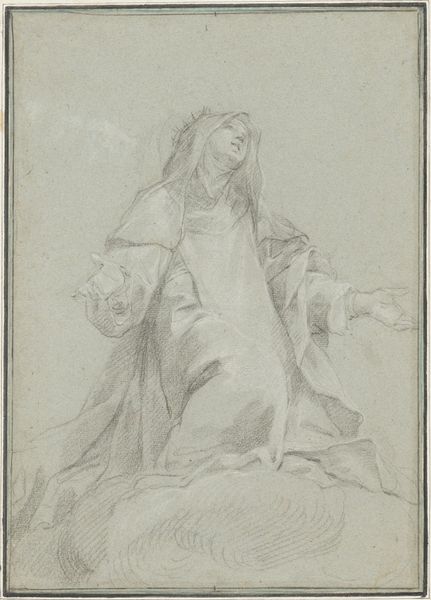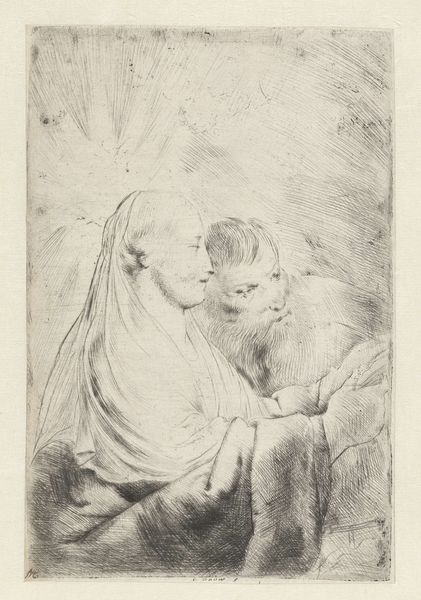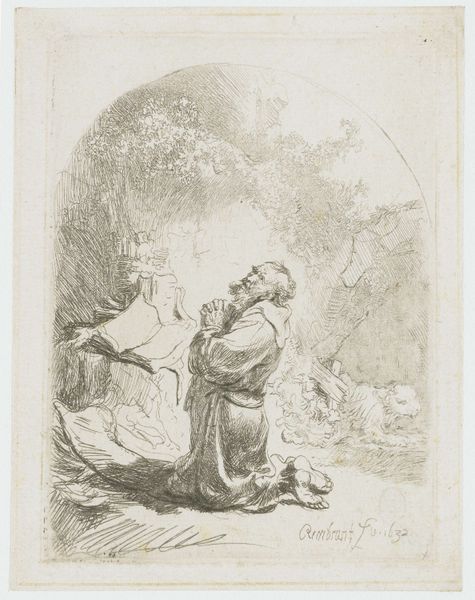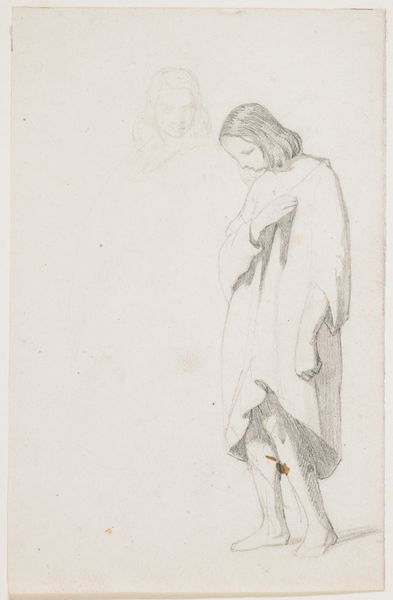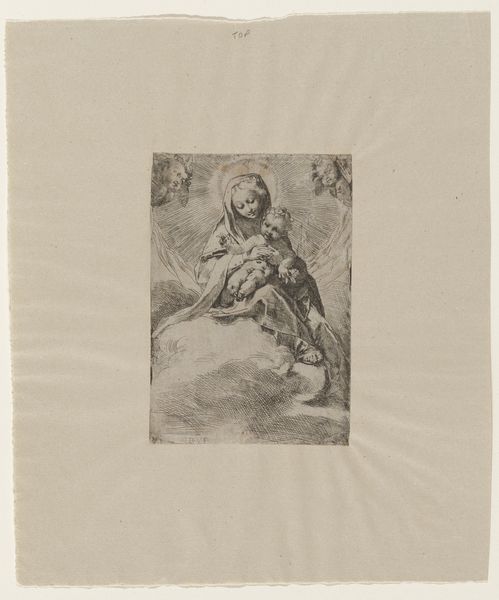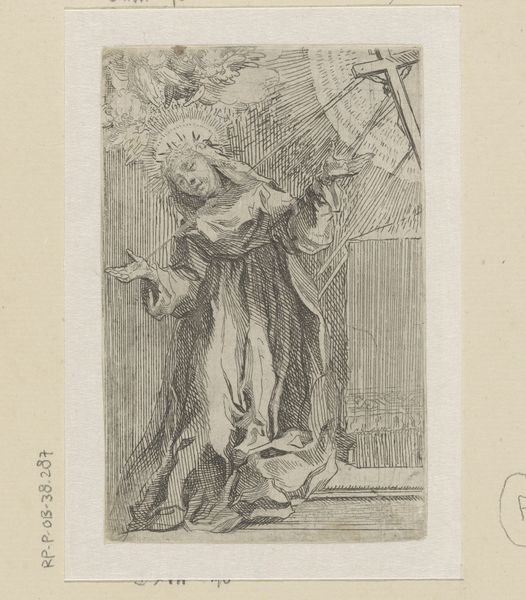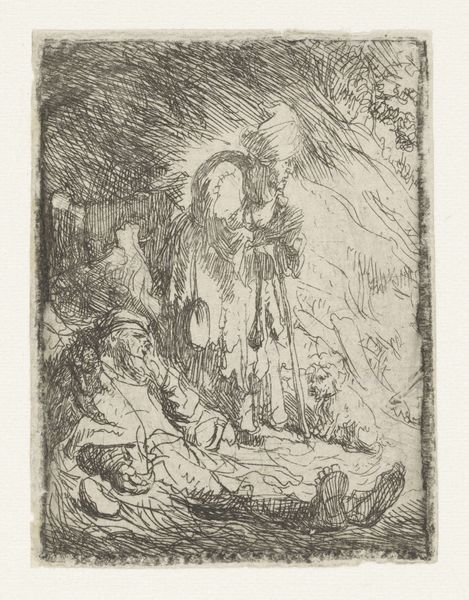
drawing, print, etching
#
portrait
#
drawing
#
baroque
# print
#
etching
#
figuration
#
line
Dimensions: 6 1/2 x 4 3/16 in. (16.51 x 10.64 cm) (plate)
Copyright: Public Domain
Rembrandt van Rijn made this etching, Virgin and Child in the Clouds, in the Dutch Republic during the 17th century. The image depicts Mary and the infant Christ bathed in divine light. But consider, what did religious imagery mean in a Protestant society that had rejected much of the Catholic Church's visual culture? The Dutch Republic was a place of relative religious tolerance, and Rembrandt explored religious themes throughout his career. His interpretations, however, were often unconventional. Here, Mary is portrayed with a human tenderness rather than idealized perfection. This reflects the broader cultural shifts of the time, in which individual experience and emotion were increasingly valued. Understanding this artwork involves delving into the social and religious history of the Dutch Golden Age. Researching the patronage of religious art, the role of printmaking in disseminating images, and the theological debates of the period can reveal the complex meanings embedded within this seemingly simple scene. Ultimately, art is never made in a vacuum, and its significance is always shaped by the world around it.
Comments
minneapolisinstituteofart about 2 years ago
⋮
Rembrandt often reinterpreted traditional Catholic subjects. His version of the Madonna in the Clouds has the freedom and sparseness of Barocci’s etching (see Mia P.47.1048), but he firmed up the cloud formation in a manner that recalls Abraham Bloemaert (see Mia P.47.79). A significant change that speaks to Protestantism is his placement of the halo on Jesus rather than on Mary, who plays a greater role in Catholic devotion. Near Mary’s left knee is a face, perhaps an early attempt by Rembrandt to etch Mary’s head in a style closer to Barocci’s or Bloemaert’s. Like those, this face has hair parted in the middle. Rembrandt, however, never showed the Virgin’s head uncovered. He always showed her wearing a head scarf. Realizing his error, he simply inverted the plate and started over. Rembrandt is not known to have been a member of any church. He and his children were baptized as Protestants, but his mother was from a Catholic family—the kind that may have employed the devotional imagery of Abraham Bloemaert.
Join the conversation
Join millions of artists and users on Artera today and experience the ultimate creative platform.
